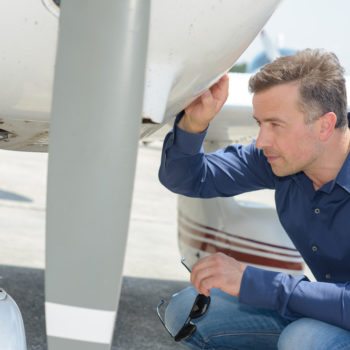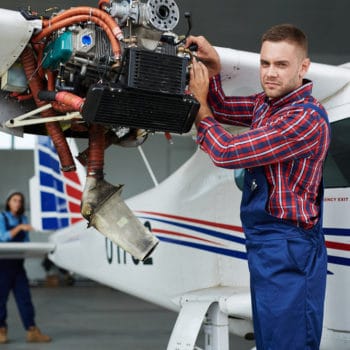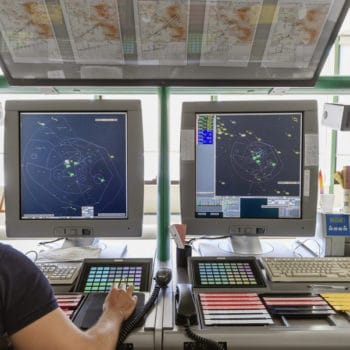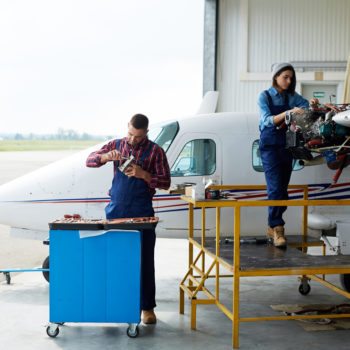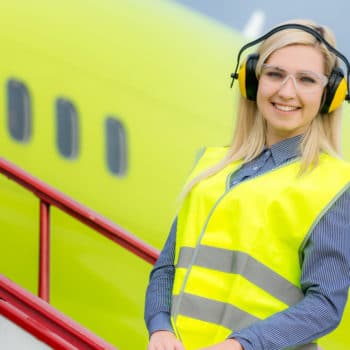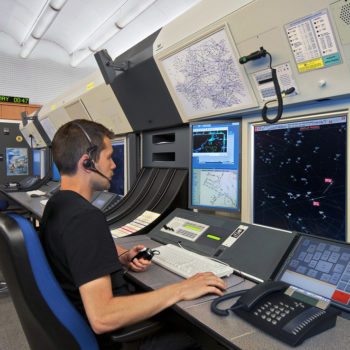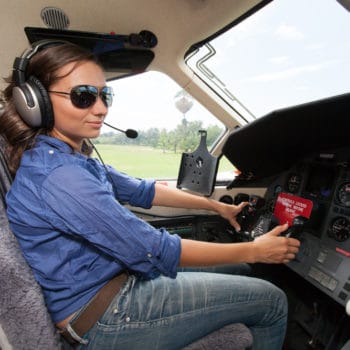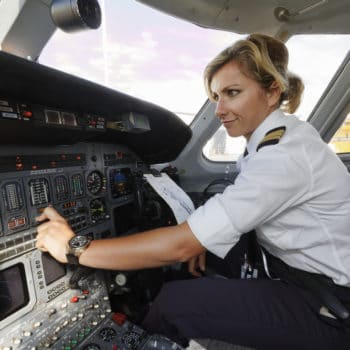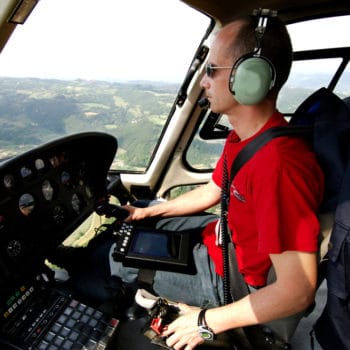Why We Love It
-
$60,200Potential Avg. Salary
-
0.6%Job Growth Rate
-
Growing DemandJob Outlook
-
Don't Take Work HomeCareer Attribute
An avionics technician is responsible for installing and troubleshooting various electrical systems on board an aircraft, including the electrical wiring that connects to it. Their main task is to make certain that every component works properly as it can affect the safety of passengers and crew.
Recommended Schools
What is an Avionics Technician?
Duties
Avionics technicians have to perform a range of important tasks such as the following:
- Inspect, maintain, modify and repair ground support equipment or vehicles, search and rescue aircrafts and other facilities like electrical generation and distribution systems in compliance with FCC, FAA and OSHA regulations.
- Perform aircraft line services such as refuelling, inspecting tanker trucks, jet fuel quality control and marshalling aircrafts.
- Keep track of all maintenance actions in aircraft records and understand CAMS documentation.
- Ensure that company rules, standards, policies and regulations are enforced and being adhered to, and undertake corrective measures for infractions.
- Use complex test equipment like continuous wave and pulse generators, time domain reflectometers, multi-trace oscilloscopes, frequency counters, deviation meters and multi-meters.
Day In The Life
As a technician in the avionics industry, you will spend the better part of your day working on various avionics equipment on aircrafts, space-crafts, missiles and helicopters based on where you are working. Your job description will vary if you work at a military airforce base versus an aerospace station. It is your job to conduct routine maintenance and produce or test parts in both military and civilian aircrafts. Collaborating and coordinating with other teams like engineers is sometimes necessary to complete operations – e.g. design and implement new electronics systems, which includes calibrating them to certain specifications.
With multiple electrical devices on board an aircraft, you ensure that every part is in working order. For instance, you might conduct tests for radar systems using oscilloscopes and circuit analysers. When required, you will remove a defective or failing device and send it to a shop for the bench avionics technician to complete repairs. If you are at a smaller workshop, you might work on maintenance in aircrafts as well as the facility.
Work Schedule And Typical Hours
Avionics technicians have to typically work around forty hours per week. In this role, you can be working in diverse environmental conditions such as an office environment where there are modern facilities, to somewhere with inclement weather like wind, severe temperature, less lighting and dust. The work requires close attention to detail and has exacting standards due to handling sensitive electronic equipment. Opportunities to travel overseas are quite common, when your skills are needed to support an aircraft or its equipment.
Growth Of The Job
This area of work expects fair growth in the next decade. Many job opportunities are expected to emerge from a high retirement rate among the avionics sector compared to industrial growth. Increased government spending on this sector and a growing economy are additional factors that will promote employment for interested candidates. Individuals demonstrating prior experience and latest knowledge of technologies will get good job prospects.
Typical Employers
Avionics technicians work at aerospace companies, armed services, large airports where aircraft servicing or repair is done, commuter and regional airlines companies, and FAA repair stations. Some employers are SkyWest Airlines, Guardian Flight, DynCorp International LLC., Precision Avionics Group, General Atomics and Affiliated Companies, Sierra Nevada Corporation, Dow Aero Logistics, LLC, etc.
Recommended Schools
How To Become an Avionics Technician
To start with, you have to possess at least a high school diploma and credentials from a training program at any of the 170 Federal Aviation Administration (FAA) certified academic institutions such as community colleges or technical institutes. Coursework in these programs include important aspects of avionics system integration and avionics systems line maintenance. You will have to master the basics of aircraft functioning, power plant and fuel systems, materials and processes, mathematics and physics.
Alternatively, you can find an entry-level position that offers on-the-job training as a substitute for formal education. According to the FAA, one has to complete a minimum of 30 months of work experience in order to acquire the Airframe and Powerplant (A&P) certification, in case they are a non-degree candidate.
Till you gain the necessary years of work experience, you must work under close supervision of an experienced and licensed avionics professional. To become a certified avionics technician, you will have to successfully pass an oral, written and practical exam that displays your expertise and preparedness for the profession.
Avionics Technician Salary Data
We’ve provided you the following to learn more about this career. The salary and growth data on this page comes from recently published Bureau of Labor Statistics data while the recommendations and editorial content are based on our research.
National Anual Salary
Low Range
$48,880Average
$60,200High Range
$87,570National Hourly Wage
Low Range
$24/hrAverage
$29/hrHigh Range
$42/hrHow do Avionics Technician salaries stack up to other jobs across the country? Based on the latest jobs data nationwide, Avionics Technician's can make an average annual salary of $60,200, or $29 per hour. On the lower end, they can make $48,880 or $24 per hour, perhaps when just starting out or based on the state you live in.
Salary Rankings And Facts
#267 Nationally for All Careers
Above Average Salary Nationally
Programs and Degrees
Here are the most common degrees for becoming an Avionics Technician. a is usually recommended and specifically a degree or coursework that prepares you for the particular field, see below.
Highest Education Among Avionics Technicians
- 0% Doctorate
- 0.5% Masters
- 7.5% Bachelors
- 26.2% Associates
- 44.3% College
- 19.7% High School
- 1.9% Less than High School
Job Growth Projections and Forecast
2014 Total Jobs
17,4002024 Est. Jobs
17,500Job Growth Rate
0.6%Est. New Jobs
100How does Avionics Technician job growth stack up to other jobs across the country? By 2024, there will be a change of 100 jobs for a total of 17,500 people employed in the career nationwide. This is a 0.6% change in growth over the next ten years, giving the career a growth rate nationwide of Above Average.
Growth Rankings And Facts
#589 Nationally for All Careers
Above Avg. Growth Nationally
What Companies Employ The Most Avionics Technicians
| Industry | Current Jobs | New Jobs Needed | % Increase |
|---|---|---|---|
| Aerospace product and parts manufacturing | 5,300 | -300 | 0% |
| Support activities for air transportation | 5,100 | 500 | 0% |
| Federal government, excluding postal service | 1,900 | -200 | 0% |

